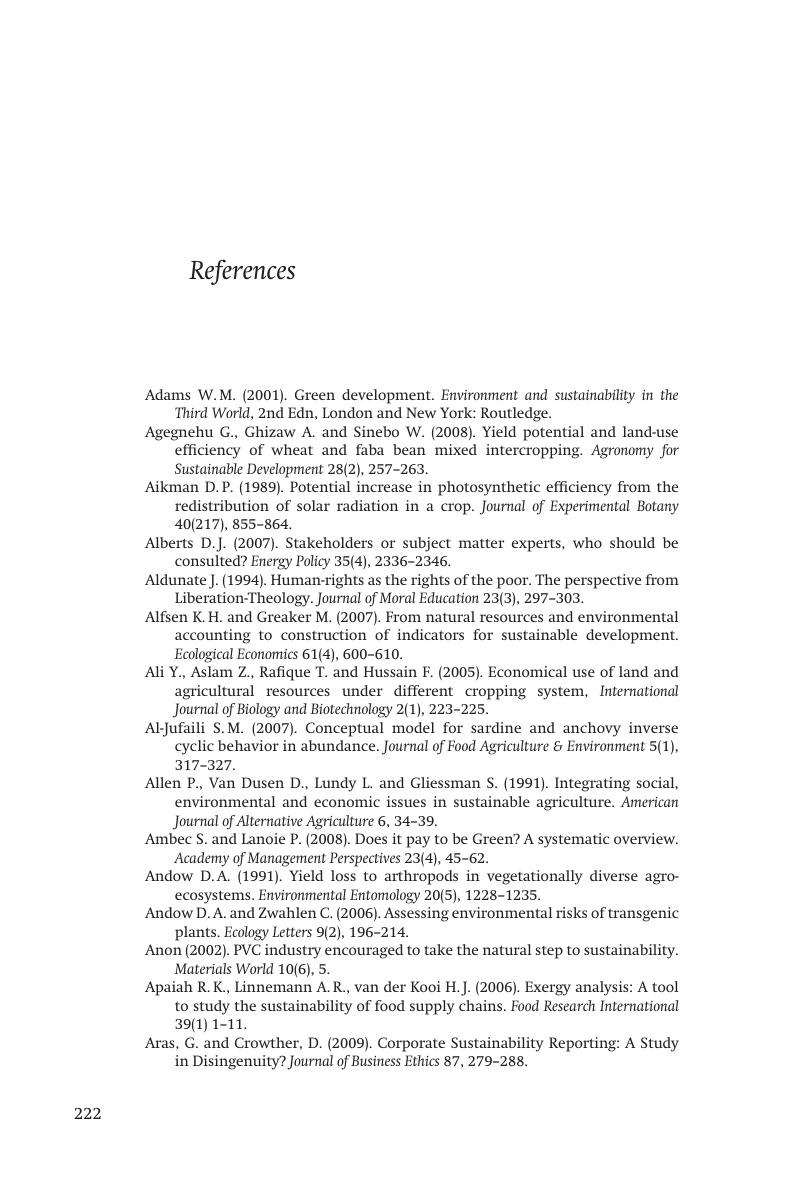Book contents
- Frontmatter
- Contents
- Preface
- 1 Sustainability: a word of our time
- 2 Sustainable agriculture: more and more production
- 3 Sustainable management of fisheries
- 4 Applying sustainability to industry
- 5 Social and economic dimensions to sustainability
- 6 The ‘doing’ of sustainability
- 7 Sustainability science?
- References
- Index
- References
References
Published online by Cambridge University Press: 05 June 2012
- Frontmatter
- Contents
- Preface
- 1 Sustainability: a word of our time
- 2 Sustainable agriculture: more and more production
- 3 Sustainable management of fisheries
- 4 Applying sustainability to industry
- 5 Social and economic dimensions to sustainability
- 6 The ‘doing’ of sustainability
- 7 Sustainability science?
- References
- Index
- References
Summary

- Type
- Chapter
- Information
- SustainabilityA Biological Perspective, pp. 222 - 245Publisher: Cambridge University PressPrint publication year: 2010
References
- 1
- Cited by

